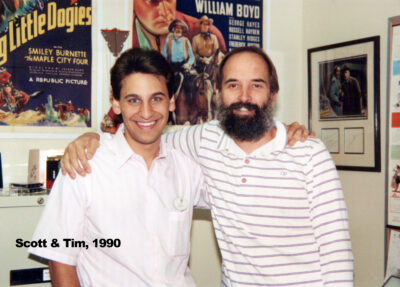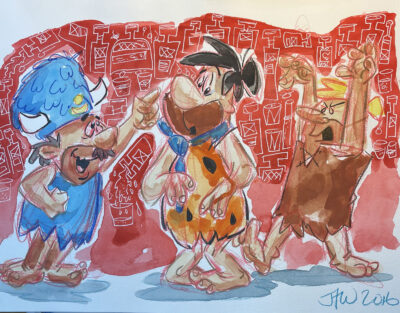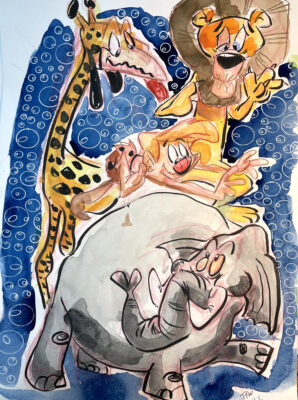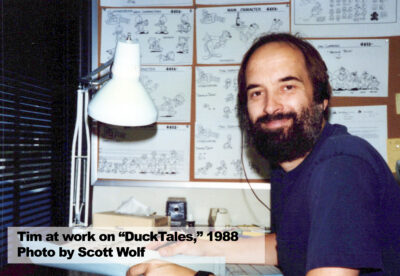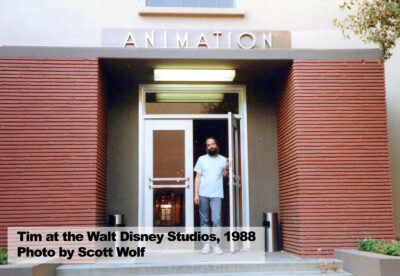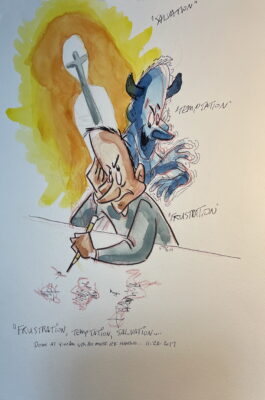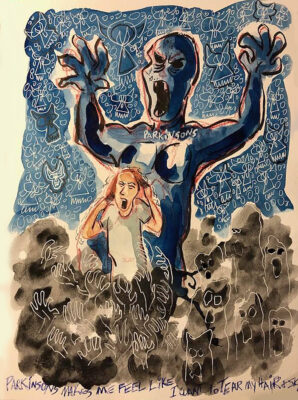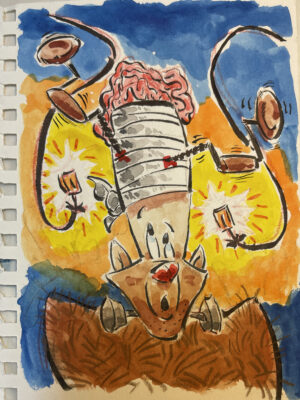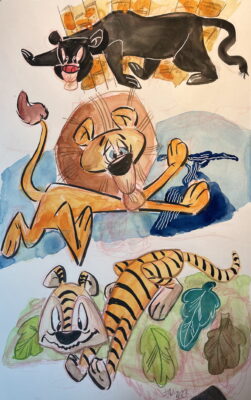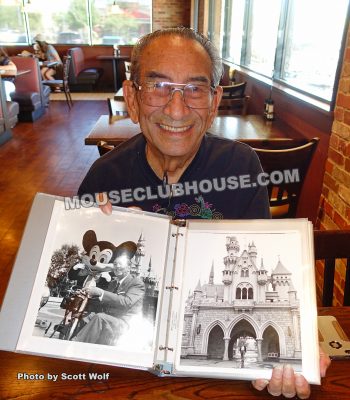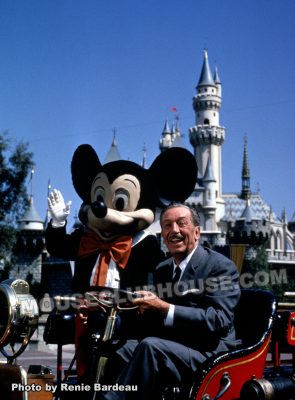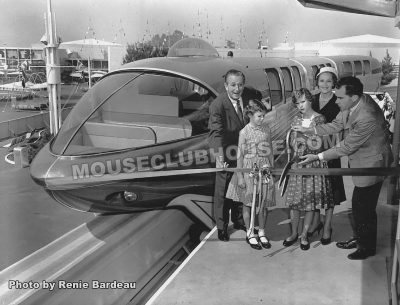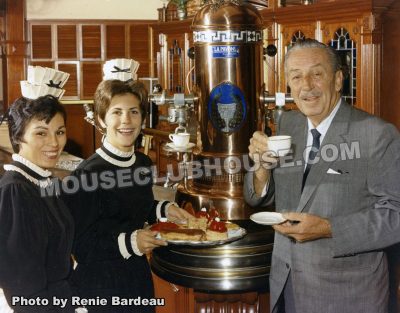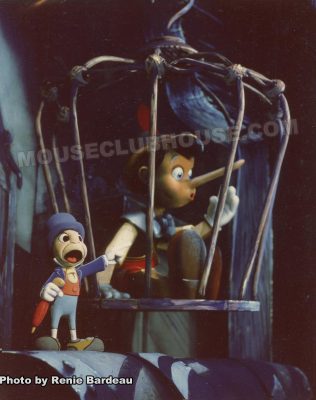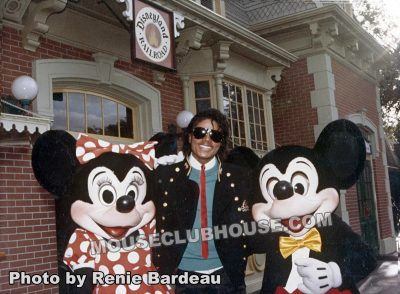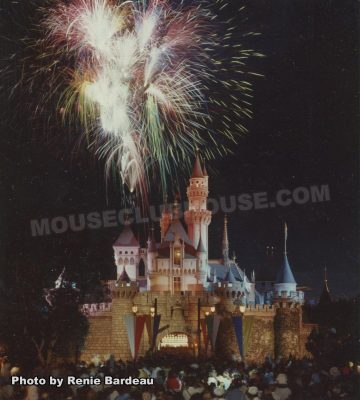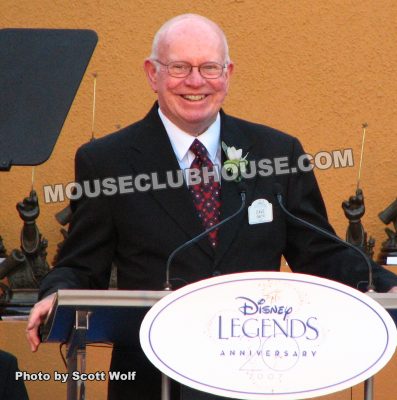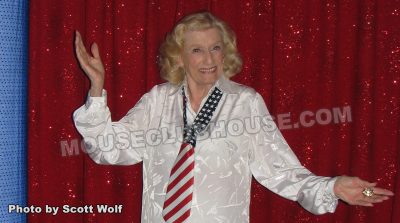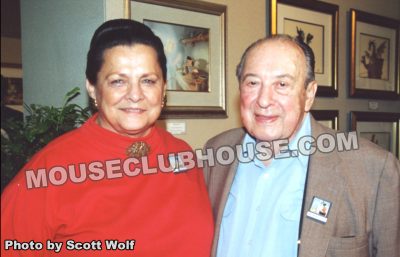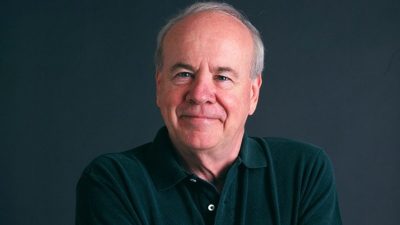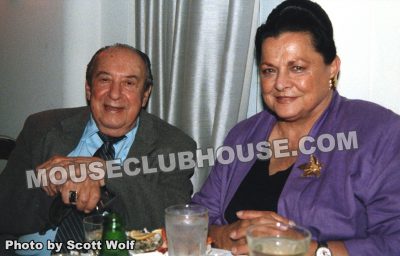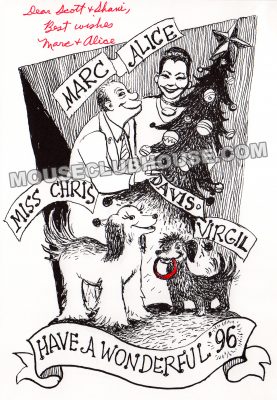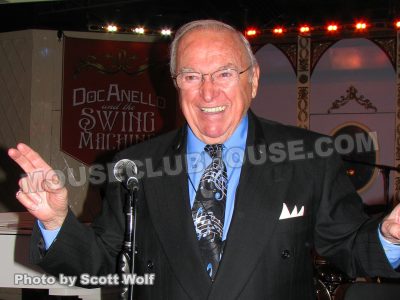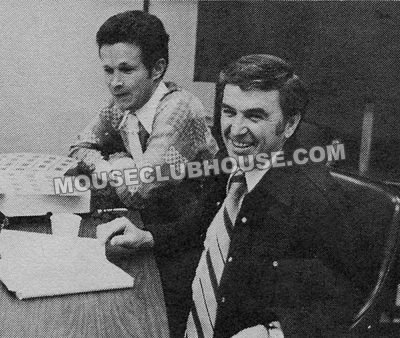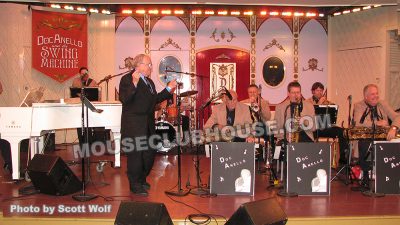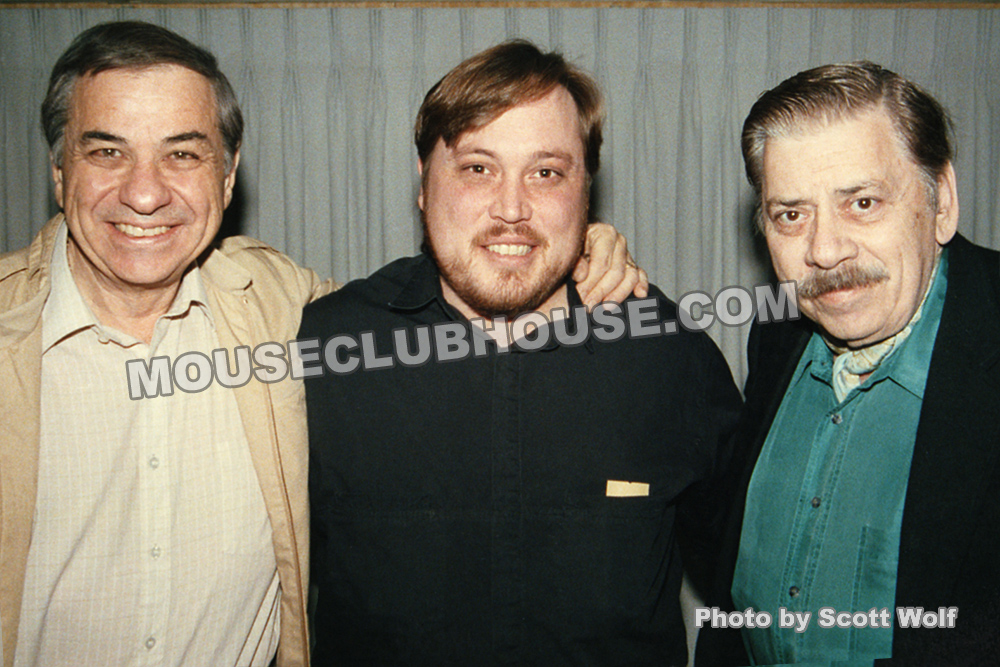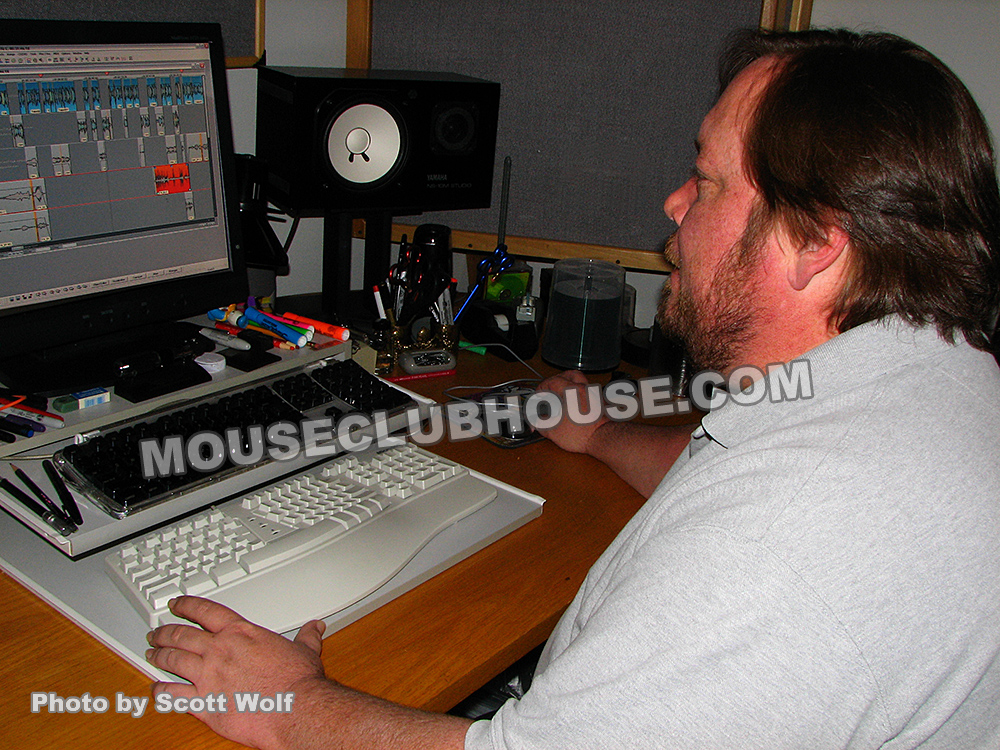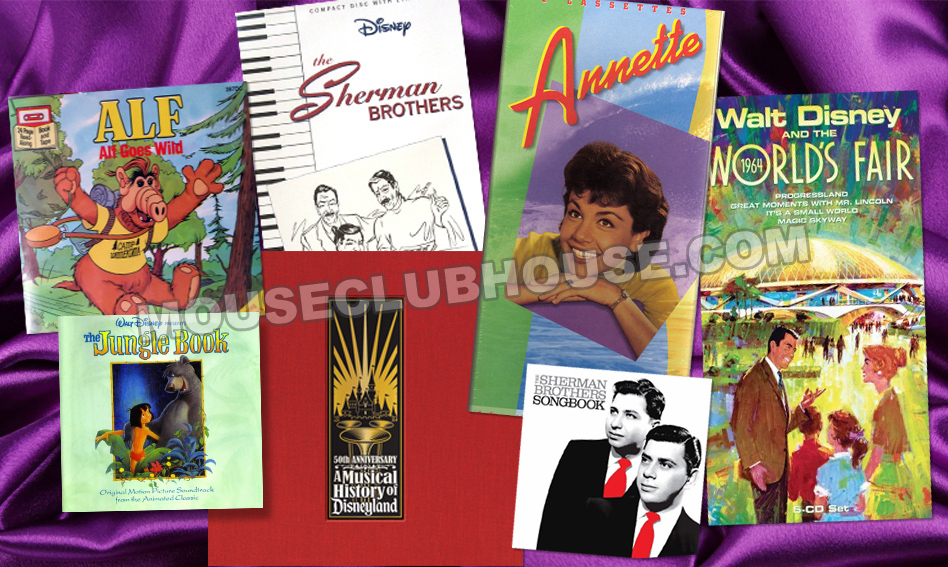(NOTE: You may click on the images in this article to view them larger)
The first person that comes to my mind when I think of my Disney TV Animation days is Tim Walker. I started out working on “DuckTales” and Tim was the director. We quickly became friends and I loved his passion for animation, and learning about his career as an animator and artist. Many years later, his art is helping him overcome Parkinson’s disease.
Around 1952, when Tim was four or five years old, he was at his grandparents’ house and ran by the TV. Noticing a cartoon on it, he stopped in his tracks and was immediately taken by what he saw. Asking his grandparents about it, he learned what they knew of animation, and that it was drawn by artists, so that day he grabbed a pencil and paper and decided to start drawing. He never stopped.
In 1959, still fascinated with animation, a man moved in next to Tim’s parents, and he happened to be the head of publicity for the local ABC network. The man told Tim about a new show that he thought he’d like called “The Flintstones,” and that it was soon coming to ABC, and was being done by the same people that did Huckleberry Hound and Yogi Bear. He told Tim that the where the Hanna Barbera studio was, which wasn’t too far from where they lived. Tim realized that when he rode his bike to school, if he went just a couple more blocks he’d get to Hanna Barbera.
One Saturday Tim decided to ride to Hanna Barbera for the first time. He looked around and noticed a couple big dumpsters outside the building. Curious if there might be anything interesting inside, Tim took a peek, to discover that they were filled not just with trash but with cels and artwork! He filled his knapsack with whatever artwork he could, although there was so much he couldn’t take it all, and he continued grabbing artwork for the next ten years. He also discovered that other studios such as Format Films and Bob Clampett’s studios were nearby and tended to have their artwork outside in the trash for the picking.
On one occasion, while Tim was literally in the dumpster at Hanna Barbera, rummaging through the discarded artwork, he heard a voice exclaim, “Get out of the trashcan, you knothead!” Although he didn’t know who he was at the time, he later learned it was half of the Hanna Barbera team, Joe Barbera. Joe would one day be Tim’s boss.
A few decades later, for Joe Barbera’s birthday, the company was making a special video for him with greetings from employees who worked for the original Hanna Barbera productions. Tim was invited to participate with his own greeting, for which he said, “Hey Mr. B. Happy birthday. I bet you don’t remember the first time we met. I do! I was 10 years old and I was in the trashcan and you told me to “get out the trashcan, you knothead!” He continued to explain that that little boy made a career in animation and has been in the business for over 30 years. While the video was shown on the big screen at the party, Tim still remembers looking over at Joe and seeing him noticeably emotional.
Tim’s neighborhood had been proving to be an important location to kickstart his career, and another neighbor helped him get his first job in animation.
In 1964, Fred Wolf of the Murakami-Wolf animation studio lived at the end of Tim’s street and gave him a summer job. Although he was hired as a gopher, Tim soon found himself given the opportunity to be involved in animation. First, he was able to assist with the opening titles of the “Voyage to the Bottom of the Sea” live action television series which the animation studio was asked to do. A radar circle with a line that would circulate appeared in the sequence, and Tim worked on that white radar line that would circulate around. It was just a piece of white tape laid on the cel, and Tim would place the tape for each frame, always making sure it protruded perfectly from the middle of the white dot in the center. Soon after, Tim found himself doing “in-betweening,” creating the drawings between the key animation frames for Sparkletts Water and Post cereal commercials.
Working for Murakami-Wolf cemented the fact that Tim was in love with animation. That is what he always wanted to do for a living, there was never a plan B. After graduating from high school, Tim attended the renowned Chouinard Art Institute for three years, and he was there when it became Cal Arts, for which Walt Disney was one of the founders. Tim graduated from the first Cal Arts class.
After graduating from Cal Arts, Tim had no problem finding work in animation and worked at a number of animation studios over the years. It was common for animator’s work to slow down seasonally, so they went wherever the work was. Always retaining a soft spot in his heart for Hanna Barbera, he was thrilled when he got to work for them on “Scooby Doo” and their other shows, including a later version of “The Flintstones,” which he always remained a huge fan of.
I first met Tim in 1987 when I got a job at Hanna Barbera and by that time he was a director, working on “The Smurfs.” Television animation started being done overseas. The studios would do much of the creative work in America, such as the scripts, storyboards, character designs, and much more. (Part of my job was to gather all of that and send then send it overseas to be animated.)
Without the need for the animators, Tim had a choice: to do storyboards or learn how to direct. Tim chose to learn everything he could about directing.
Directing in animation was all about the timing. There was the slugging, which involved determining the number of frames of animation needed for every action in the show and recording it on the storyboards, and then there were the exposure sheets which went into even greater detail, indicating every frame of the show. Tim learned timing from Ray Patterson, whose animation credits include “Fantasia”, “Dumbo”, and the Tom and Jerry shorts, but Tim’s own experience as an animator had also given him great insight into timing. He soon became one of the best animation directors in the business.
Both Tim and I soon ended up at Disney, working on the series “DuckTales” and I loved spending time with him, watching him work, visiting the Disney studio lot, and visiting some of the old animator’s hangouts for lunch. Tim knew so much history for those places we visited and I loved hearing all his stories and meeting some of his animation friends.
When I was working on the series “TaleSpin” and the producer left to go back to Disney Feature Animation, Tim took over and became my boss! He later produced some episodes of “Darkwing Duck,” but he chose to go back to directing because he enjoyed working more closely with the individual scenes.
Tim was under a five-year contract at Disney when another opportunity arose. The contract allowed an artist to do freelance work, but they had to give Disney the first opportunity. If Disney didn’t have freelance work, the artist could accept other work.
With a year and a half left on his contract, Tim was at work when the phone rang. It was Liza Ann Warren, whom he had worked with at Hanna Barbera and Disney. Liza Ann had just started working at Warner Bros. and she asked to have lunch with him. She explained that she was working on the new Batman animated series and she showed him all kinds of gorgeous pre-production artwork. She handed him a storyboard and asked, “How soon can you start slugging?” Following that meeting, Tim spent the next 27 years at Warner Bros.
Around 2006, Tim started to notice a weakness in his right arm, which he assumed was carpal tunnel syndrome, however a visit to the doctor had him quickly diagnosed with Parkinson’s disease. This was not carpal tunnel, and Tim was told his right hand would never get better, only worsen.
Parkinson’s most often affects the left side, not the right. This could be devastating news for anybody, but particularly a right-handed artist. During any hard time it was Tim’s career that got him through it. His art was his life and Tim felt destroyed. He knew he had to accept that his career was over, and even worse he felt that his life was over.
Tim’s devastation soon turned to determination. He was not ready to give up his passion, and he was determined to learn to draw with his left hand, even if it just meant doing abstracts. Tim went to the bookstore and got a sketchbook but he also got a book for early education, for teaching writing to kids, with pages of lined paper and dotted letters that kids can trace. He filled up that book, using his left hand, and taught himself how to control his left hand. The first time he picked up a pencil in the left hand to draw something he surprised himself. It wasn’t bad!
After his diagnosis, he told his boss, Howard, that he has Parkinson’s disease and that he can no longer write or draw with his right hand, but Howard wasn’t ready to let Tim go, telling him, “I’m not paying you for beautiful calligraphy, I’m paying you for what you know. As long as I can read it, you’re here.”
In 2010 Tim published an inspirational book of his left-handed artwork, “Drawings from the Left, or Parkinson’s Pictures.” The book become highly inspirational, telling a story, through humorous art, of overcoming a hurdle that seemed too large to climb. Almost every day he gets calls from people all over the world, particularly people with Parkinson’s, and he helps them to “never give up,” often sending them a copy of his book.
After six years of working since being diagnosed, Tim’s Parkinson’s got progressively worse and he retired in 2014, after 50 years in animation, because it started to affect his left side and he couldn’t keep up the pace. As the years progressed, there was a definite decline, not just in his work, but even in his movements. In his words, Tim was “shuffling along every day, walking like I was 90 years old.”
In 2021, Tim’s neurologist started working with experts at Stanford, and she brought one of his books to Stanford University and showed it to some doctors. They were inspired and invited Tim to do a Zoom call. After a series of tests, including observing him both on and off his meds, the doctors at Stanford decided they wanted to see him in person, and they loved him!
Tim brought some original paintings of his to show the doctors. The head doctor said, “Do you understand the magnitude of what you’ve accomplished?! This is nothing short of a miracle!” They praised his attitude and explained to him that they felt he would be a perfect candidate for a deep brain-stimulation operation.
Through a series of events, Tim met a man named Jonathan from New York, who told him, “Tim, I got the operation six months ago. You’re going to love it. It’s life-changing! You’ll do great with it. You’ve got to do it.” Tim felt like a guardian angel was sent to him. After that he never ever thought about it being a six-hour brain surgery.
The operation was in August, 2021 and Jonathan was right, it gave Tim his life back. He’s even drawing with his right hand again! Talking with Tim after the operation is like talking with the same Tim I worked with at Disney in the ’80s! He sounds the same, and has that same spirit that I was so “drawn to.”
Tim realizes his operation was not a cure, but it’s buying time, and he sees that as nothing but a positive! And who knows what will happen with that extra time, because they are making all kinds of headway with Parkinson’s!
In 2014, Tim completed another book, “Shaken Not Broken: An Artist’s Journey Through Hell,” telling a story through his watercolor art, and hell it was at times. There was the insomnia, the constipation, the agony over the loss of control. Sometimes he would get very frustrated with his art and rip it up, and sometimes he wanted to just end it all.
It was Tim’s art that really got him through, and continues to give him the strength to fight. It is the same drive Tim had since he first discovered animation on his grandparent’s television and was determined to make a career of it. Nothing, not even Parkinson’s was going to keep Tim from doing what he loves, and that passion is saving his life today!

